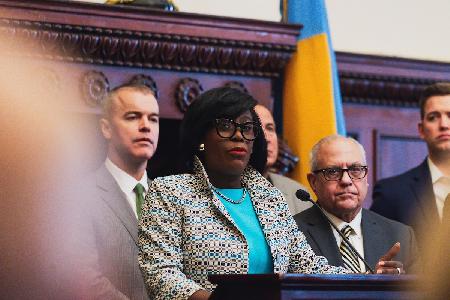It’s a question we posed to several edtech experts at a recent stakeholder chat supported by Verizon 5G. There, members of Baltimore, DC and Philadelphia’s edtech communities met to discuss this evolution. Given the effects of the pandemic, the return to in-person learning and the constant growth of technology, classrooms don’t look the same as they did in 2019, many concluded — and for some, they’ve changed forever.
While some respondents faced the need to close their doors in 2020’s earliest days, LaKisha Greenwade, the Baltimore-based founder of Wearable Tech Ventures, said that the pandemic actually helped her, especially with bringing on corporate partners.
“It showed us that we had the competency to deliver in a virtual environment and we didn’t realize a lot of other institutions didn’t have that confidence,” Greenwade said. “It also helped us to identify the disadvantages in that digital divide.”
After the world was forced to shift to virtual learning, edtech companies and tools that may have been kept on the backburner moved to front-and-center of classrooms. Surinder Sharma, the founder of Bear, Delaware’s Smart Kidz Club, noted that parents’ desire for education apps that offered real value enabled her own company’s growth.
“Parents, teachers — everybody has been more accepting of education technology,” Sharma said. “So, anybody who was a little hesitant in using apps for children’s education or technology, they became more accepting of that, and I think that has been accelerated.”
Still, the story is not so simple as giving kids a tricked-out education app and letting them do their thing. Baltimore Digital Equity Coalition Executive Director Cody Dorsey noted that kids need more than just access to devices (which, to be clear, many still lack). First, they need strong internet access, a device they can use regularly and, then, digital literacy training to make sure they know how to use it.
“Just because you give everyone a computer for class doesn’t mean that everyone knows how to work said computer,” Dorsey said. “If you are not going to provide them the training to work the technology, then it is not accessible.”
A lingering legacy
Many teachers and schools are still tackling the transition into this current, post-peak-pandemic era of learning. Words Liive Founder Sage Salvo noted that many schools don’t have a dedicated worker to select and vet what edtech gets brought into their schools. Sometimes it’s the responsibility of principals or CTOs, but on the whole, there’s little regulation or policy to match the massive number of options.
“It’s created more clutter, and unfortunately, I think that has actually reduced and sabotaged some of the tech that’s available,” the DC-based Salvo said. “Schools don’t have a good way of trying to evaluate and decide what tools to bring in.”
Ami Patel Hopkins, a former Philadelphia School District teacher and founder of Asha Advisors, was in the classroom through the pandemic and in the aftermath. During the height of the pandemic, she said, she had to really innovate and lean on technology. But upon the return to the classroom, the math and science teacher found that tech, at times, made things more difficult.
“I felt like technology was a hindrance because kids were so dependent on it,” Patel Hopkins said. “I had to shift and make technology more of an enhancement [by] enhancing my lesson plans and making it a tool when, during the pandemic, it was everything for me.”
At the college level, educators are facing students with a whole slew of different digital priorities. Some finished high school online and now need to meet different in-person engagement needs. Others may be going back to the classroom after several years away and have little or no experience with edtech tools. All in all, students now need to think about their digital preferences and learning needs —and decide how technical they want to be.
Bill Romani, an entrepreneur-in-residence at Baltimore’s Loyola University Maryland, noted that many students were already trending toward wanting to use technology. The pandemic thus reinforced what they would rather do, and many now work virtually even while they’re technically in a classroom. They might be sitting at a table in the room, for example, but spending the whole time in Google Docs and not speaking to classmates, he explained. For educators, that raises an important question.
“How are we emphasizing or reintroducing students to the importance of the non-technological pieces, but still using the benefits of technology?” he asked.
Join the conversation!
Find news, events, jobs and people who share your interests on Technical.ly's open community Slack

Philly’s IT department fires long-tenured staff amid a high-level shakeup of priorities

RealLIST Connectors 2024: Meet 20 leaders spreading innovation throughout Pittsburgh

Why is it so hard to find entry-level software engineering jobs?


